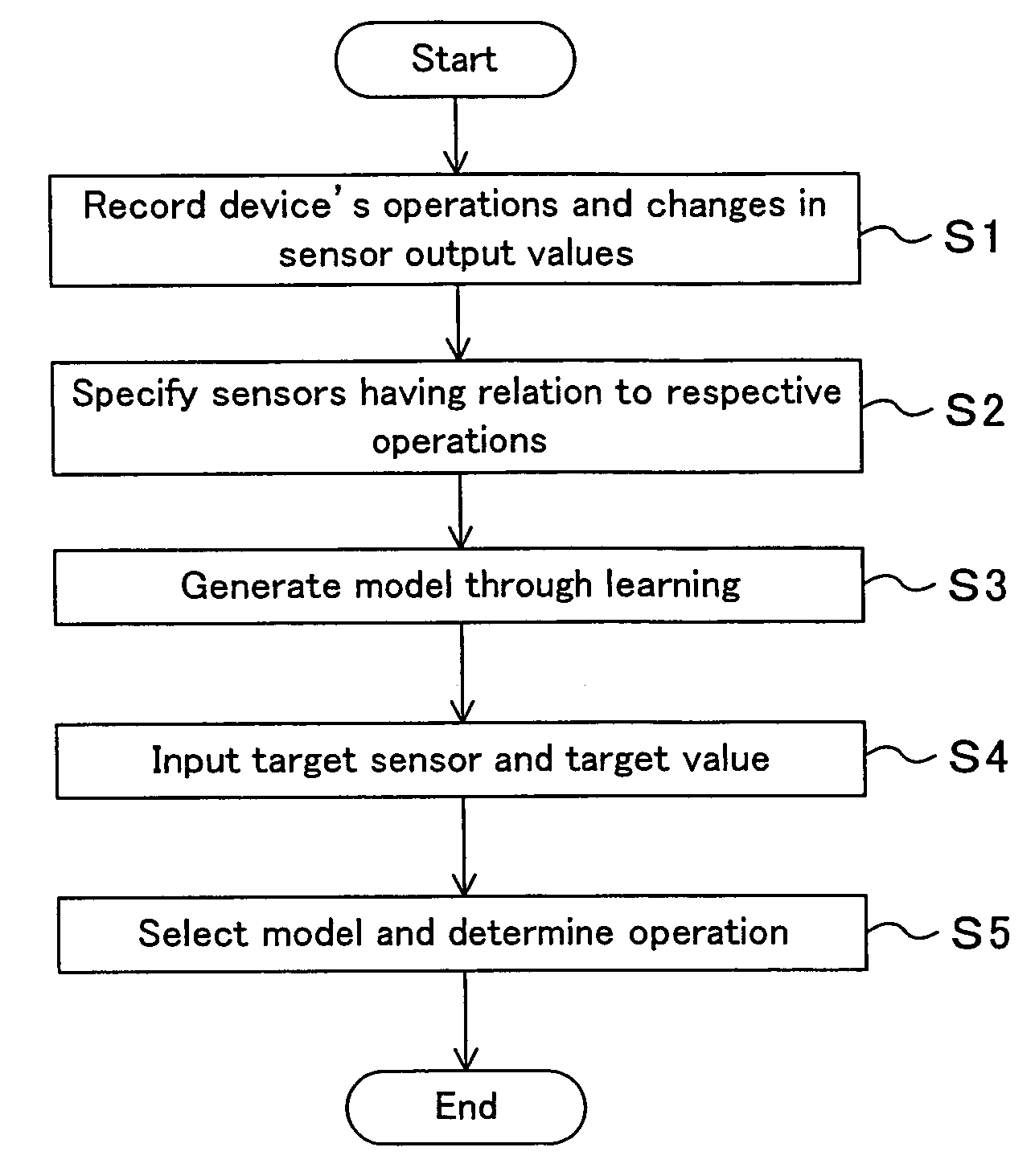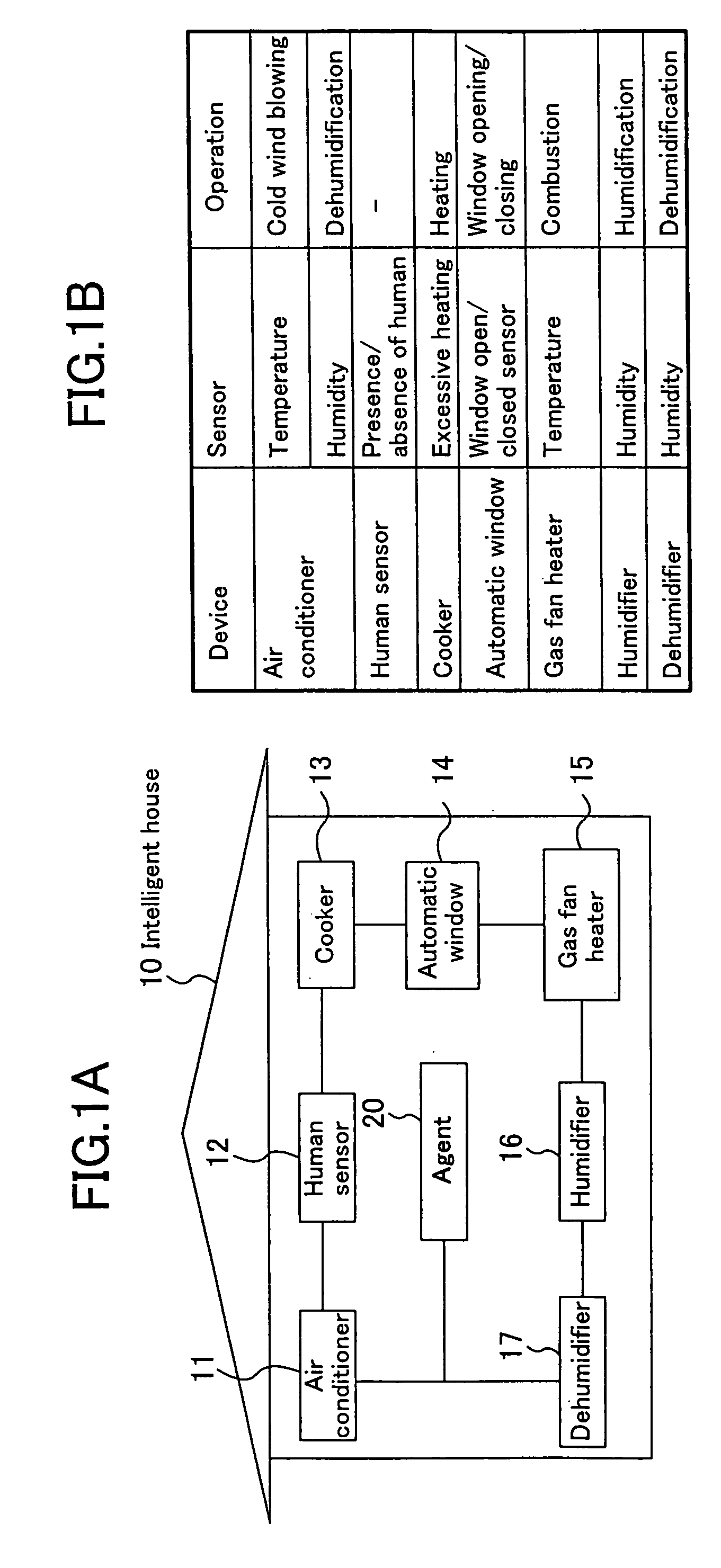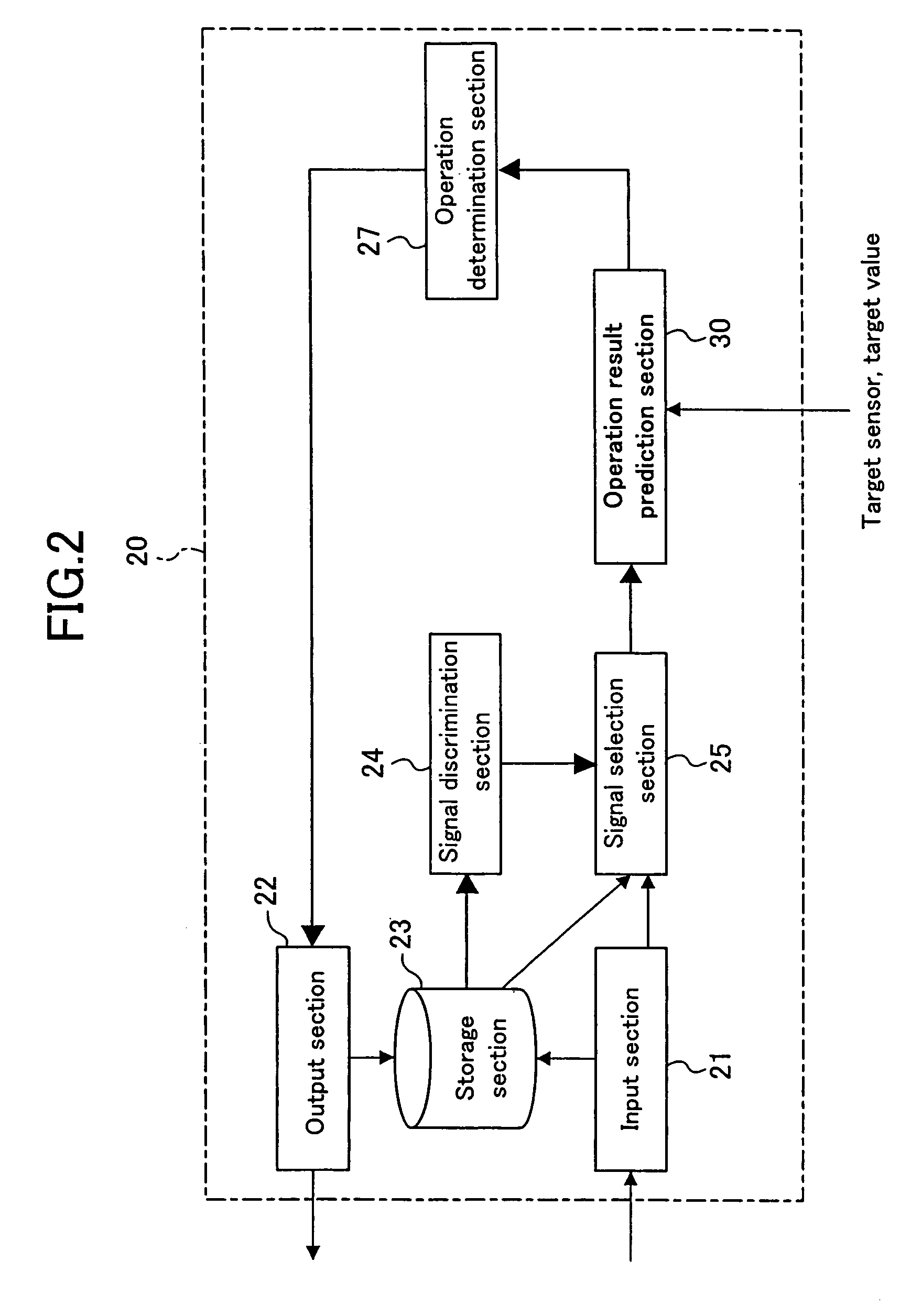Device control method and device control system
a device control and control method technology, applied in automatic control, electric controllers, instruments, etc., can solve the problems of increasing the number of combinations of inputs and outputs, increasing energy consumption, and difficulty in learning
- Summary
- Abstract
- Description
- Claims
- Application Information
AI Technical Summary
Benefits of technology
Problems solved by technology
Method used
Image
Examples
embodiment 1
[0042] Embodiment 1 of the present invention will be descried by referring to devices installed in an intelligent house as an example. Herein, the intelligent house means a dwelling house in a condition that devices in the house are connected with each other through a network so as to enable information interchange among the devices. Each device is capable of obtaining information from the other devices and capable of using such information in an operation of its own.
[0043]FIG. 1 is a conceptual diagram illustrating an example of the intelligent house. FIG. 1 indicates devices relating to control of living environment such as temperature and humidity in the house. In an actual intelligent house, various devices such as devices dealing with video or audio and devices relating to meals are installed besides the devices relating to the control of the living environment. However, only a partial configuration of the network in the intelligent house is shown in FIG. 1 conceptually for th...
embodiment 2
[0088] One of significant features in Embodiment 2 of the present invention lies in that in the step S5 in the flow of FIG. 4, a future change in output value of the target sensor is taken into consideration in the operation determination based on the prediction model obtained through learning.
[0089]FIG. 12 shows a constitution of an agent 20A according to the present embodiment. In FIG. 12, the same reference numerals are assigned to constitutional elements common to those in FIG. 1, and the detailed description thereof is omitted here. Difference in constitution from FIG. 1 is that an environment prediction section 28 is provided for predicting a future change in output value of the target sensor which is caused due to a factor other than the corresponding operation of the device.
[0090] In the actual system, there is a case where prediction of an external factor is necessary for determining an operation. For example, in the example of the aforementioned intelligent house 10, the...
embodiment 3
[0093] The above embodiments reference an example of utilization in the intelligent house but the present invention is applicable to other use, for example, to generation of motion models of a home use robot.
[0094] A home use robot generally includes, as input sensors, a visual sensor for video input, an auditory sensor for speech input, a tactile sensor for detecting user's direct touch to the robot, a ultrasonic sensor for detecting a distance or an obstacle, encoders for detecting angles of joints, a sensor for detecting gravity movement, and the like. Further, it includes, as actuators for motion, a leg or a tire for transfer, a hand for moving an object, a head portion for expressing a viewing direction, nodding, and the like, a motor or a light for generating facial expressions, a speaker for speaking to the user, and the like. Particularly, a home use robot having a multifunction incorporates several tens of sensors for input and several tens of actuators for output, the num...
PUM
 Login to View More
Login to View More Abstract
Description
Claims
Application Information
 Login to View More
Login to View More - R&D
- Intellectual Property
- Life Sciences
- Materials
- Tech Scout
- Unparalleled Data Quality
- Higher Quality Content
- 60% Fewer Hallucinations
Browse by: Latest US Patents, China's latest patents, Technical Efficacy Thesaurus, Application Domain, Technology Topic, Popular Technical Reports.
© 2025 PatSnap. All rights reserved.Legal|Privacy policy|Modern Slavery Act Transparency Statement|Sitemap|About US| Contact US: help@patsnap.com



